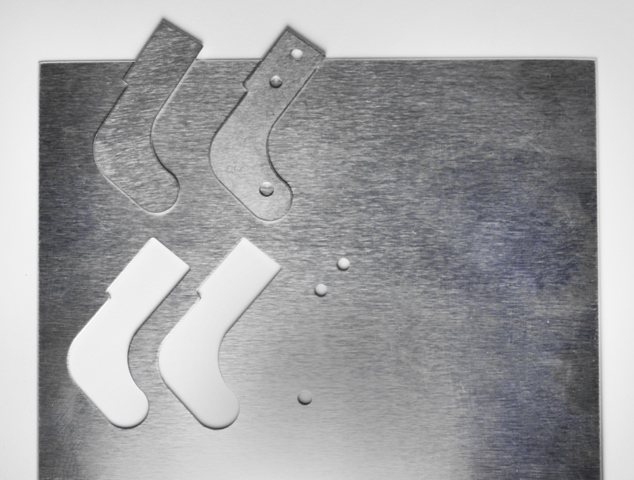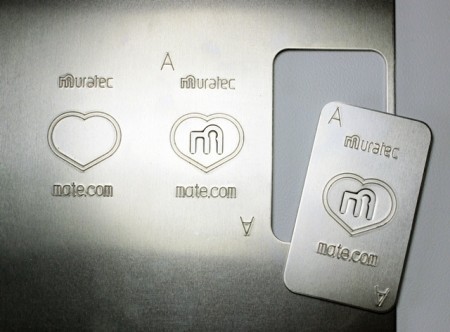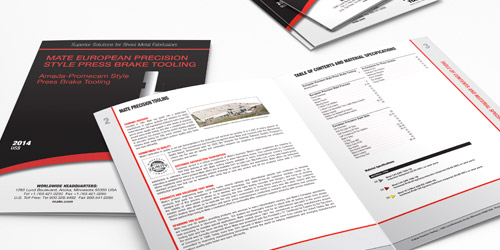Making Small Parts in the Punch Press
Solution Bulletin
There are many tools that are designed to help complete the fabrication of small parts in the punch press. What benefits are there to completing small parts in your machine?
Reduce or eliminate the need for secondary operations
- Eliminate the need for layout of special bends or hardware locations
- Create small bends in the punch press, eliminating the need for a press brake operation
- V line bending tools can allow manual bending of small parts, eliminating the need for a press brake operation
- Reduce or eliminate the need for deburring or grinding
- Relieved blanking dies can be designed to accommodate small forms, allowing greater sheet utilization
- Special shaped or contoured tools can be made for blanking out custom parts, reducing or eliminating the need for multiple tools or nibbling operations to create those parts
- Tapped holes can be completed in some punch presses by a variety of methods, eliminating a secondary drilling operation (EasyTap™, DK Tapping unit from Mate)
- Lance and form tools can create a variety of ways to secure or lock parts together. This can reduce or eliminate the need to insert fasteners, weld studs, welds or other methods (HexLock™, SnapLock™, other lance and form products such as shelf clips or tab tools)

Small parts that are too large for a blanking tool can be completed using a parts chute, if available
- A slitting tool or custom size shape can be used for the last hit to cut the part free from the sheet, allowing the completed part to slide down a parts chute
- Creating nests of small parts with retaining features
- Custom designed tools for tabbing large parts can be designed to allow parts to remain in the sheet until complete. Parts can then be easily removed by hand
- Use a Square EasySnap™ tool to create tabs that hold completed parts in thin gauge sheets (up to 16 gauge, or 1.5mm), allowing easy manual removal when the sheet or nest is complete
- Use a standard EasySnap™ tool to create longer snap lines (up to 12in, 305mm) to hold parts in the sheet. Parts can be snapped out of the sheet or nest easily when the nest is complete
- Use a Square ShearButton™ tool to create tabs that hold completed parts in thicker gauge sheets (thicker than 16 gauge, or 1.5mm), allowing easy manual removal when the sheet or nest is complete
Progressive stamping tools can be designed to create multiple features for small part production (Limited to available station size ranges)
- Bends and blanking (or other features) could all be possible within the same tool
- • As the sheet is fed through the tool in predetermined increments, each stroke of the tool adds a feature to the part,
- resulting in a part that is blanked out to complete the fabrication
A variety of punch press marking tools are available
- Add company logos, artwork, part numbers, instructions and more
Mate Tooling to consider:
- EasySnap™ – Allows fabricators to simply snap parts out of punched material with reduced micro joints or slitting. Ideal
- for thinner materials.
- Square EasySnap™ – Similar application to Square ShearButton, but for thinner materials.
- Square ShearButton™ – For quick, clean parts separation on thicker materials.
- Sheetmarker™ – Ideal for inscribing or marking components during the punch press portion of the manufacturing process.
- Rollerball Deburr™ – Helps eliminate costly secondary operations. Pushes away burr and creates a radius on the side of the part. Can be used with materials of any thickness in mild steel, stainless steel and aluminum.
- Mate EasyTap™ – Produces threaded holes in a single punch press set-up.
- HexLock™ – An innovative forming assembly engineered to provide a reliable and secure method of retaining common threaded fasteners in sheet metal.
- SnapLock™ – A Lance and Form assembly that provides a self-locking, spring loaded tab that snaps securely into a pre-punched hole. Eliminates expensive secondary operations such as spot welding, riveting or fastening with threaded hardware.

